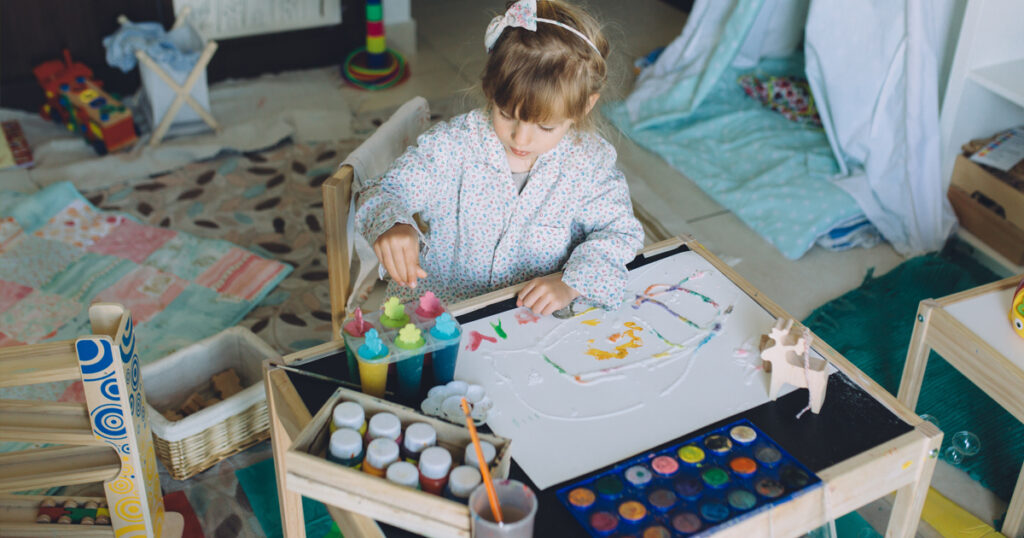There’s an important conversation happening on Reddit that no one is paying attention to. It revolves around an issue arguably as important as healthy eating and increasing physical activity in children, yet it doesn’t seem to be receiving the same hype. It causes guilt among parents and caregivers throughout the world; perhaps you’ve even dealt with it yourself (especially now, because of the Covid-19 pandemic).
Since you’re here reading this article, I’m going to assume you’ve at least wondered whether or not screen time is good for your kids. If so, you’re not alone…
If you type in “screen time” to the Reddit search bar, these are just some of the threads you’ll find from the past year:
- Let’s be honest, how much screen time are you allowing your kids and how are they?
- What is the best way to manage screen time for your children?
- How to budget screen time
- Managing Screen Time for Multiple Kids, Many Devices
The list goes on, and on, and on.
[su_box title=”TABLE OF CONTENTS” style=”default” box_color=”#e66659″ title_color=”#FFFFFF” radius=”0″] Kids and Screen Time: What Does The Research SayScreen Time Recommendations: How Much is Too Much Screen Time?
Babies and Toddlers
Young Children
Older Children [su_expand more_text=”Show more” less_text=”Show less” height=”24″ text_color=”#333333″ link_color=”#0088FF” link_align=”left”]
How Does Screen Time Affect Kids’ Mental health?
How to Limit Screen Time for Children
Step 1: Be a Screen Time Role Model
Step 2: Assign “Technology-free Zones”
Step 3: Block Off Times for the Whole Family to Disconnect From Screens
Step 4: Be Consistent With Limits
Step 5: Use Apps And Parental Controls
Step 6: Keep Lines of Communication Open
Step 7: Don’t Expect Kids Nannies to Implement Screen Time Rules if You Don’t
Screen Time and Covid-19
Alternatives to Screen Time
Podcasts
Audio Books
Art Projects
Get Outside
Read
Final Thoughts on Screen Time[/su_expand][/su_box]
A collective nerve has clearly been touched with many parents out there. They are asking how much screen time is too much and wondering how to set screen time limits in a time when technology is the only thing keeping many children entertained and connected to the outside world during social distancing measures.
If you can relate, read on. We’ve looked at the American Academy of Pediatrics recommendations for screen time (alongside other sources) and have created this complete guide to screen time for kids.
These screen time recommendations that I’m about to go through vary by age group. There are also specific steps parents, nannies, and caregivers can take to help children manage screen time in healthy ways. So let’s dive in, shall we?
KIDS AND SCREEN TIME: WHAT DOES THE RESEARCH SAY?
Scientists have been interested in the effects of screen time on children’s brains ever since screens have been around. Because this is a fairly new problem, arising only within the last two decades or so, much of the research is also quite new, and sometimes incomplete.
With that said, there are several key studies that are revealing just what screen time may be doing to our children’s mental health.
SCREEN TIME RECOMMENDATIONS: HOW MUCH IS TOO MUCH SCREEN TIME?
As already mentioned, screen time recommendations vary by age group. Here is where the current recommendations stand.

BABIES AND TODDLERS
The first two years of a child’s life are crucial when it comes to brain development. The brain craves human interaction and playtime like a new parent craves a nap. For that reason, screen time can be especially harmful for children under 2.
- 0-18 months: The American Academy of Pediatrics (AAP) recommends no screen time for children younger than 18 months. The only exception is video chatting, as this allows children to interact and connect with others.
- 18-24 months: Parents and caregivers can begin to introduce children to screens for small chunks of time, but always with supervision.
YOUNG CHILDREN
Until about the age of 3, language skills are developing at breakneck speeds, and screen time can get in the way. It’s important for young children to interact face-to-face with those around them in order to learn language and social skills, which is why between ages 2 and 5, they should have no more than 1 hour of screen time each day-and remember that screen time can be more productive when you’re there to supervise and guide them.
OLDER CHILDREN
For children over the age of 5, there is slightly more wiggle room, and the recommendations currently sit at 2 hours per day until the age of 18. Remember, their brains are still developing all throughout childhood and adolescence, so quality sleep and physical activity should always take precedence over screen time.
HOW DOES SCREEN TIME AFFECT KIDS’ MENTAL HEALTH?
While researchers are only just scratching the surface of how screen time may affect children’s mental health, there are some key studies coming out of this area that offer important glimpses into the possible consequences.
One study-in-progress that is looking at 11,000 kids for over a decade has already noted “premature thinning of the cortex.” This is the area of the brain that processes information from the five senses, so it’s important! Furthermore, “kids who spend more than two hours a day on screens got lower scores on thinking and language tests.” None of that sounds good, does it?
A second study, published in Preventive Medicine Reports, found that “young people who spend seven hours or more a day on screens are more than twice as likely to be diagnosed with depression or anxiety than those who use screens for an hour a day.” They were also more easily distracted, less emotionally stable, and had more problems finishing tasks and making friends.
While all of this likely sounds like doom and gloom, don’t get disheartened. Knowing these possible consequences is important, it’s never too late to start limiting screen time for children.

HOW TO LIMIT SCREEN TIME FOR CHILDREN
If you’re ready to work on helping a child in your life find balance with their screen time, we have some simple steps to help you along.
STEP 1: BE A SCREEN TIME ROLE MODEL
Young children learn a great deal by watching and imitating. If your child sees you glued to your screen for hours at a time, they will be more likely to do the same. However, if you spend time working in the yard, going through a daily exercise routine, reading, listening to an audio book, or playing board games with the family, they’ll also begin to learn these healthy habits that will help them resist the pull of screens.
STEP 2: ASSIGN “TECHNOLOGY-FREE ZONES”
Indicate areas of the house where screens simply aren’t allowed. You can even have your child help you make signs to mark these zones to add an extra layer of fun and interaction. For example, you could set aside the dining room as a technology free zone and explain that this area should only be used for sharing family meals and engaging in conversation.
STEP 3: BLOCK OFF TIMES FOR THE WHOLE FAMILY TO DISCONNECT FROM SCREENS
Your child may feel that it’s unfair if they have to disconnect from their screens, but the adults are free to continue using them. To help with this, decide on times throughout the day when the whole family steps away from their screens. For example, it could be an hour before bedtime, or just after lunch. Figure out what works best for your family’s schedule.
STEP 4: BE CONSISTENT WITH LIMITS
As you implement specific time limits, make sure you enforce the rules consistently, no matter how much whining or pleading is happening. Children will naturally try to extend their limits; gently remind them that there’s a rule they have to follow. After a week or two of strictly enforced limits, they’ll settle into the new screen time routine.
STEP 5: USE APPS AND PARENTAL CONTROLS
Almost all TV, computer, and cell phone software allows some level of screen time parental control these days. Beyond that, you can download specific apps that will give you more control over what your child is interacting with when they’re in the middle of screen time.
If you are especially concerned, you may even ask for your child’s passwords in case you need to check up on them every once in a while. Make sure you explain that this is not meant to be an invasion of privacy but simply a measure to keep them safe.
STEP 6: KEEP LINES OF COMMUNICATION OPEN
As you’re experimenting with how to limit screen time, help your child understand why you’re placing certain limits on their time with tech. In addition to that conversation, ensure that they feel comfortable discussing possible changes to their limits in the future. Their priorities and interests will change, and they may feel that they need more time with their screens for a specific reason. Hear them out in these cases, and be open to these discussions so they feel heard and respected.
STEP 7: DON’T EXPECT NANNIES TO IMPLEMENT SCREEN TIME RULES IF YOU DON’T
Screen time rules must start with parents or other caregivers if they’re going to be effective. If you allow your child to use screens at home but then demand that a nanny never use screens to entertain children throughout the day, kids will feel confused and frustrated, which will likely leave the nanny feeling the same.
When children know that rules can easily be bent or broken at home, especially when it comes to screen time, they’ll be more likely to try the same with a nanny. This will increase the likelihood of anger and tantrums when the nanny tries to implement stricter rules, which will make for a negative experience on both sides. Helping your children cope with rules and guidelines at home will ultimately help them in every area of their life.

SCREEN TIME AND COVID-19
The question of how to limit screen time has gotten significantly more complicated during lockdowns and quarantines imposed because of Covid-19. Parents are doing their best to care for and educate kids while also still getting their own work done. It’s a lot to manage! And, of course, it’s understandable that many parents are turning to screens to help them balance it all.
Unfortunately, there isn’t a lot of research or advice on how parents should be handling everything right now, as it’s so new for everyone. No one, including researchers, were given time to prepare. Basically, the consensus is that it depends on the child and the situation. You know your child and their level of responsibility and maturity. How much screen time can they reasonably handle? If you begin to notice behavioral issues or sleep disruption, it may be time to rethink Covid-19 screen time limits.
During these difficult months, cut yourself and your child a little slack and be open with them about why you’re allowing more screen time for now. Make sure they understand that while rules will change and loosen for a while, stricter limits will come back into play once stay-at-home orders have passed. This way, you can avoid anger and frustration when you begin trying to reimpose stricter screen time limits.
ALTERNATIVES TO SCREEN TIME
In order to help your child get away from their screens, offer them some alternatives from the list below, or get creative and come up with others!
PODCASTS
Podcasts are amazing alternatives to screen time! While they involve the use of technology, your child can listen while they’re drawing a picture, settling into a bedtime routine, or building an epic LEGO city.
Goop Tales will teach your children important morals while traveling around the world alongside the lively Goop girls and boys. You can start with our most popular episode, Gablia and the Turkish Fairy Chimneys.
AUDIO BOOKS
For young children who haven’t quite got the hang of reading yet, there are tons of audio books for kids to keep them entertained without screens. They are great for improving vocabulary and are even being used in dyslexia programs because they encourage reading.
Besides being fun and educational, audio books promote active listening for kids and help with comprehension, especially if you take the time to discuss the story with them afterwards. If your child is engaged with an audio book, they’ll need prolonged focus and an active imagination to visualize the story, two great skills that will act as an antidote to the hypnotic effect of screens.
ART PROJECTS
You will be hard pressed to find a kid who doesn’t like to draw a picture or do a finger painting. You can even throw a glob of shaving cream on the table and let them create and erase pictures to their heart’s content. If you have some popsicle sticks around, put them on the table alongside some glue and markers and have them design an interesting building.

GET OUTSIDE
While most kids will resist being pulled away from their screens with directions to “go outside,” once they’re out, they won’t be able to resist having fun. Create a short outdoor scavenger hunt if they start to say, “But there’s nothing to do outside!”
READ
As kids settle in for the evening, hand them a book instead of their phone. Have them read out loud to you during family-bonding time and ask discussion questions throughout. They’ll love interacting with you after your work day and will feel proud when you listen to them read.
FINAL THOUGHTS ON SCREEN TIME
Everywhere you look nowadays, there are new and changing recommendations on how to limit screen time for children. While those screen time recommendations are great places to start, it’s also important to take into account each individual child’s needs. You, as their caregiver, likely have an intuition around how much they can handle and when.
Remember, when used correctly and with guidance, technology can be an amazing educational tool capable of encouraging children to explore the world around them and learn skills they’ll need in their future studies and careers.
The key is balance. It’s up to you to decide what that looks like for your family. Use this guide to help you get started and take it from there!
